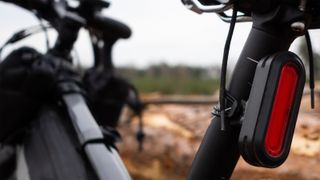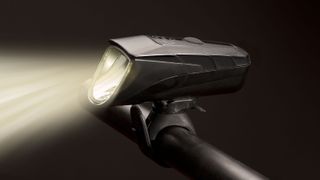How to install bike lights
Learn how to install bike lights correctly with our essential guide

It’s important to install bike lights correctly if you’re commuting after dark. A properly installed light should be tightly screwed in place, so that it can’t rotate or slip. It should also run parallel to the ground – if your light is installed at an angle and points at the road, you’ll be much less visible to other vehicles.
You also need to make sure you get the best bike lights for the job. Lights that attach with screw-tightening mechanisms are much more secure than those that come with a strap. And models that can be charged by USB are easier to keep powered than old-fashioned, battery models.
We’ve pulled together a step-by-step guide on installation for you, which includes a guide to placing the lights and how to tighten them properly. For more tips and advice on cycling, have a read through our round-up of the best bike helmets and our guide to cycling at night.
First, get the right lights

To comply with the rules of the road in the UK you’ll need a front-facing white light and a rear-facing red light. In the US you also need a white front light but you can use a red rear reflector instead of a light (we’d recommend using a red light anyway, because it helps with visibility.)
You can add some flashing lights to your set-up if you want to be even more visible – just make sure you’re within the legal limits. In the UK it’s legal to use flashing lights, as long as they flash between 60 and 240 times per minute and give off at least 48 lumens of light (check the packaging for the number of lumens). In the US the law on flashing lights varies from state to state, so check the local rules before you purchase any.
Most lights come with a simple clamp or strap that you affix to your handlebars; clamps can be tightened with a screw mechanism and straps loop around bars and fasten onto themselves. In our experience, screw-on clamp lights are much more secure than those with a strap based mechanism, and less likely to fly off if you go over a pothole.
Choose where to place your lights
The white bike light goes at the front, facing forwards, and the red bike light goes at the back, facing backwards. Normally you install the white light on the handlebars, and the red light on the seatpost, but the red light can also be attached to a bike rack if you have one over the rear wheel.
Sign up to get the BEST of Tom’s Guide direct to your inbox.
Upgrade your life with a daily dose of the biggest tech news, lifestyle hacks and our curated analysis. Be the first to know about cutting-edge gadgets and the hottest deals.
Don’t be tempted to put your rear light on your mudguard as this is too low and won’t be seen by drivers. It’s also best to position the lights as centrally as possible, as this will give the clearest indication of where you’re positioned in the lane.
Identify the gripping mechanism
Bike lights come with all kinds of mechanisms, but usually you’ll have to affix something to your handlebars or seat clamp that will ‘hold’ the light in place. Your light should come with instructions on how to do this, but if you’ve misplaced them here’s what you typically need to do:

Screw on clamp
- Make sure the area where you want to install the light is clean and dry.
- Loosely fit the clamp onto your bike where you intend to position it. The lamp itself should be parallel to the ground, so that the beam faces forward.
- Once your clamp is in the right position, begin tightening the screw on the clamp. If your clamp slips down as you’re doing this, rotate it into the right position before tightening any further.
Strap
- Make sure the area where you want to install the light is clean and dry.
- Hold the strap in the right position, so that the light beam will be parallel to the ground.
- Loop the strap around the bars or seat clamp and pull it into the tautest position possible, hooking the notch on the strap through the hole.
- Make sure that your lamp is secure before you try cycling at night.
Maintain your lights
Maintaining your lights is just as important as fitting them correctly. You need to check that they’re secure before you set off at night — and make sure the lights themselves are clean and fully charged. Mucky lights that are low on battery will be fainter and less effective.
Most modern lights are charged by USB cable. Get into the habit of charging regularly so you’re never caught out on a dark night. If you’ve got an old-fashioned, battery-powered light, keep some spare batteries in your cycling kit.
Rosee is a freelance writer. She reports on health, fitness, nutrition and well-being, with special interests in outdoor living, cycling, swimming and freediving. A journalist for more than 20 years, her work has appeared in Countryfile magazine, Mountain Biking UK, Live Science, Coach and on BikeRadar.com, among others.

